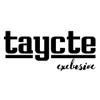Dive Brief:
-
Ferrara Candy plans to reformulate and repackage some of Nestlé's former candy brands, according to Baking Business. The changes, starting with Butterfinger, will begin later this year or early in 2019. The company said the changes will be backed by a larger marketing effort.
-
Todd Siwak, Ferrara's CEO, told Baking Business that investment and innovation would focus on Butterfinger's quality, consistency and ingredients. The company has started roasting its own peanuts, for example, and will be adopting new packaging to "lock in freshness" and convey "the crispety, crunchety, peanut buttery focus that we have."
-
Ferrara, the Illinois-based maker of RedHots, Brach's and other sweet treats, along with about 20 candy brands formerly owned by Nestlé, are now part of The Ferrero Group of Italy, the maker of Nutella, Ferrero Rocher and Tic Tacs. Ferrara is in charge of three candy manufacturing facilities in Illinois previously owned by Nestlé.
Dive Insight:
Nestlé's decision to sell its U.S. confectionery operations comes as food and business manufacturers are considering divesting units that are posting slower growth or no longer fit with the long-term vision of the company. Nestlé was a distant player in the U.S. confectionary space, and the unit accounted for about 3% of the food giant's total sales.
But even though American consumers claim to be turning away from sugar, they still like to indulge. Ferrara and its parent couldn't resist the opportunity to acquire a popular roster of brands, including Butterfinger, BabyRuth, SweeTarts and Nerds, while rapidly growing their U.S. presence.
Ferrara hasn't been overseeing the former U.S. Nestlé candy lineup for long, but it's moving quickly. Siwak said the family-owned Ferrero Group has a long-term focus on building brands and relationships. So now Ferrara is assessing its entire portfolio of about 35 brands — both the former Nestlé ones and its own — to see what might make sense to change. Both larger leading brands and emerging growth ones will be looked at.
Changing an iconic candy bar like Butterfinger is risky, but if fans see improvements and the changes boost sales, it can be a worthwhile move. Consumers generally go for crunchy and indulgent candy, particularly with a mix of flavors like chocolate and peanut butter with salty and sweet tastes, so switching things around with in-house peanut roasting and modern packaging might attract new adherents. Shoppers increasingly want fresher ingredients and better taste, so if Ferrara can succeed in doing that, it could be a major win.
But if the changes don't sit well with Butterfinger's fan base, there could be a backlash as consumers flee and sales plunge. The introduction of New Coke in 1985 was a disaster as only 13% of soda drinkers liked the product. Just 77 days later, the company brought back old Coke under the guise of Classic Coke. However, product reformulations have paid off in the long run for products such as Kraft's Macaroni and Cheese and Campbell's frozen soups.
Nestlé has recently drawn fire from an activist investor who wants it to move faster in making changes and driving growth. In contrast, the new generation now in charge of The Ferrero Group appears willing to take chances and embark on ambitious M&A. Ferrara is going to reflect the direction its owner wants to take with the newly purchased U.S. candy portfolio. In an effort to stoke growth in some iconic but slow-growing brands in a competitive candy space, Ferrara seems to be taking a bold but necessary step to refresh its roster of old brands.












